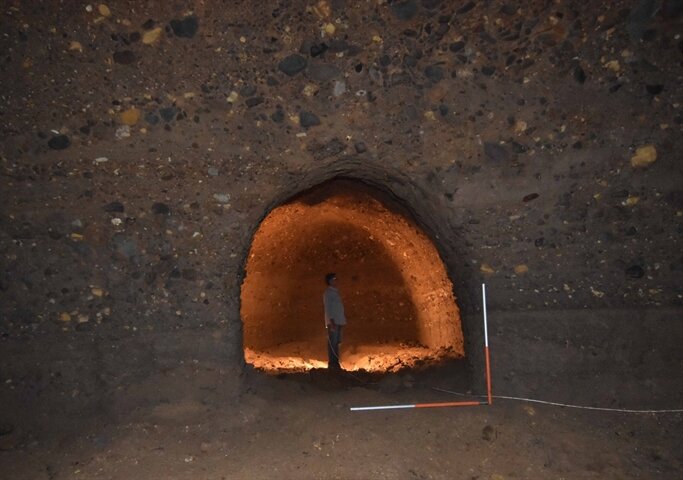Refuge with troglodytic architecture found in northern Iran

TEHRAN – Locals of a northern Iranian village have discovered a cave-like entrance to a larger area, which recent investigation by cultural heritage experts proved it was probably used as a refuge in the far past.
Situated in a historical district of the Siahkal county, Gilan province, the refuge is a matter of importance for experts because it bears troglodytic architectural elements, provincial tourism chief Shahroud Amirentekhabi said on Tuesday, CHTN reported.
“This shelter, located in the heart of a natural hill and in the personal property of one of the villagers, is approximately 390 square meters in area 98 meters in length, yet its height varies in different parts ranging from about one meter in the range of entrance to about 4 meters in the middle. Its architectural space is completely hand carved without usage of any material to create space for its construction, and it seems to have been used as a refuge for emergency and danger,” the official explained.
This is the second troglodytic architecture being discovered in Siahkal’s countryside areas over the past year, the official stated.
In a primary research some evidence came to light; which dates from the Ilkhanid era (1256–1335) and the Timurid epoch (1370–1507), he said.
Considering the architectural significance and cultural value of the place, it was first decided to prepare an emergency dossier for a [possible] inscription on the National Heritage list, and in parallel, to pursue licenses for archaeological excavations, significance concluded.
Iran is a haven for ancient troglodytic architecture which are somewhat forgotten though they are filled with life and creativity. The northwest Kandovan village is one the most famous examples of troglodytic architecture in the country; its ice-cream cone-shaped homes are resembling that of Turkey’s Cappadocia.
Last October, the country hosted the 3rd International Troglodytic Architecture Conference in which tens of experts, researches and academia discussed troglodyte-associated architecture, culture and technology.
AFM/MQ/MG
Leave a Comment